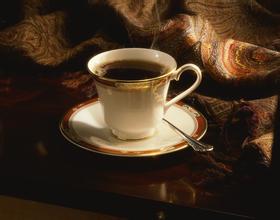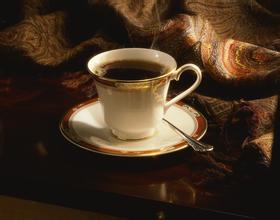Panamanian Coffee Manor Flavor and Taste introduction Jade Manor
In 1996, Blaise and Rachel visited a farm for sale in the Haramijun area of the Bocketi Valley, and was attracted by the beautiful farm and immediately bought it. This is Esmeralda. Daniel Lou, the third son of Haramiqiong Farm. It is in this farm that Mr. Bidasson has grown Geisha coffee that attracts the attention of the coffee world.
The pronunciation of Geisha is the same as Japanese geisha, so it is also called geisha coffee. Because the tree species are taller than ordinary coffee trees, they are originally planted in a small area of the manor and are used as windbreaks. In order to take part in the annual competition for the best coffee in Panama, the son of the manor owner searched all the coffee trees in the manor for testing, which gave Geisha a chance to appear on the stage. After that, he also participated in various world coffee competitions and won a total of 11 championships in the history of Esmeralda Farm: in 1924, the Swede Hans Elliot founded Esmeralda Farm, which was not a coffee grower but a ranch. Forty years later, in 1964, Mr. Danielupidason's grandfather, Ruth Ruth. Mr. Bidasson bought Esmeralda Farm in order to have an old home after retirement. His grandfather, Mr. Ruth Lover Bidasson, was born in Sweden and was president of the Bank of America and director of United Nations development. His son, Mr. Brais Bidarsson, moved to Panama from California in 1973 and inherited to run his father's farm. In 1987, most of the farms were changed to grow coffee. In 1994, he invested in the machinery and equipment of refined coffee in order to create a brand. Mr. Brais Bidarson and his wife Susan also raised three children, Elligu (born in Philadelphia in 1966). Rachel Lou (born in Sweden in 1967), Danielu (born in Panama in 1974) Geisha, swept the coffee world with hurricane power. The coffee revolution is so menacing that the blue mountains of Jamaica and Kona of Hawaii, who have occupied the throne of the coffee kingdom for a long time, have to stay away. This wild species, which originated in Ethiopia, is now widely used in major coffee producing areas after numerous battles. And its best spokesman, the Geisha species from the LaEsmeralda manor in Panama, was discovered in the rose summer forest of Ethiopia in 1931 and sent to the Coffee Institute in Kenya. It was introduced to Uganda and Tanzania in 1936 and introduced to Costa Rica in 1953. Panama was introduced in the 1970s by Mr. Francis Coselazin of Dongba Seven Farm Garden from CATIE in Costa Rica and then began to grow rosy summer coffee. In the early years, the recognition of top coffee mostly followed Japan, one king and one queen, Jamaica Blue Mountains and Hawaii Kona, but with the continuous improvement of the standard of coffee-producing countries and the sharing of information. It has exposed us to more boutique coffee, and this coffee bean in Panama has become the new king of coffee in recent years.

Important Notice :
前街咖啡 FrontStreet Coffee has moved to new addredd:
FrontStreet Coffee Address: 315,Donghua East Road,GuangZhou
Tel:020 38364473
- Prev

Introduction to Mercedes Manor in El Salvador Coffee Flavor Manor
El Salvador's coffee accounts for 40% of the country's exports, and it is usually picked in November, December and January-March of the following year. The export of raw beans lasts almost all year round. Coffee is produced in seven of the country's 14 provinces, with the largest number in the northwestern provinces of chalatenango and santa ana. The coffee produced in El Salvador is 100% Arabica, of which 68% is
- Next

Ecuador Coffee Plantation Flavor Taste Introduction Santa Cruz Plantation
Famous brand in South America, Ecuadorian A-class coffee, with state-owned large-scale seed garden;100% produced from 1300-2000 meters of natural vegetation in the highlands, popular in Europe and America, to taste the exquisite world-class Arabica Arabica flavor at supermarket prices. ES coffee is a clean organic coffee grown on the slopes of the Latin American Andes. It's 100% pure coffee, and through hard work
Related
- Does Rose Summer choose Blue, Green or Red? Detailed explanation of Rose Summer Coffee plots and Classification in Panamanian Jade Manor
- What is the difference between the origin, producing area, processing plant, cooperative and manor of coffee beans?
- How fine does the espresso powder fit? how to grind the espresso?
- Sca coffee roasting degree color card coffee roasting degree 8 roasting color values what do you mean?
- The practice of lattes: how to make lattes at home
- Introduction to Indonesian Fine Coffee beans-- Java Coffee producing area of Indonesian Arabica Coffee
- How much will the flavor of light and medium roasted rose summer be expressed? What baking level is rose summer suitable for?
- Introduction to the characteristics of washing, sun-drying or wet-planing coffee commonly used in Mantenin, Indonesia
- Price characteristics of Arabica Coffee Bean Starbucks introduction to Manning Coffee Bean Taste producing area Variety Manor
- What is the authentic Yega flavor? What are the flavor characteristics of the really excellent Yejasuffi coffee beans?

